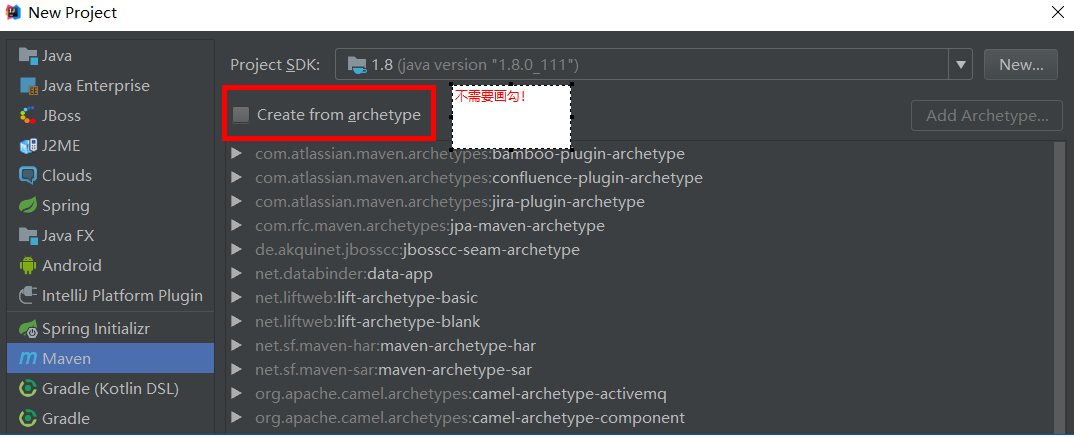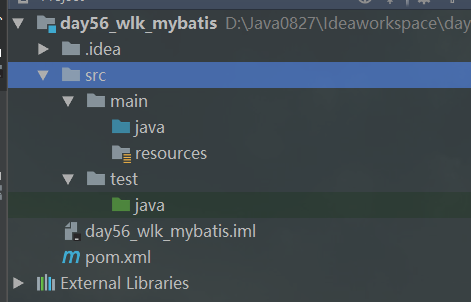文章目录
一、Mybatis使用回顾
mybatis回顾
1.导包(核心包,依赖包,测试)
2.核心配置文件
3.实体&表
4.mapper和对应的xml
5.MyBatisUtil 获取数据库连接对象
6.测试
使用Idea创建Maven项目,步骤:
1、准备数据库,创建项目
准备好需要的数据库,同时在Idea中创建普通的Maven项目

最终结构

2、Maven进行导包
以前是需要手动进行导包,现在只需要在pom.xml进行写入,maven会在本地仓库与中央仓库进行配置
<dependencies>
<!-- mybatis核心包 -->
<dependency>
<groupId>org.mybatis</groupId>
<artifactId>mybatis</artifactId>
<version>3.2.1</version>
</dependency>
<!-- mysql驱动包 -->
<dependency>
<groupId>mysql</groupId>
<artifactId>mysql-connector-java</artifactId>
<version>5.1.26</version>
</dependency>
<!-- junit测试包 -->
<dependency>
<groupId>junit</groupId>
<artifactId>junit</artifactId>
<version>4.11</version>
<!--作用域,删了以后可以在所有包内进行测试@test-->
<scope>test</scope>
</dependency>
</dependencies>
3、添加核心配置文件 mybatis-config.xml
<?xml version="1.0" encoding="UTF-8"?>
<!DOCTYPE configuration
PUBLIC "-//mybatis.org//DTD Config 3.0//EN"
"http://mybatis.org/dtd/mybatis-3-config.dtd">
<configuration>
<!-- 加载jdbc.properties-->
<properties resource="jdbc.properties"/>
<!--申明操作数据库的环境-->
<environments default="MYSQL">
<environment id="MYSQL">
<!--使用jdbc的事务-->
<transactionManager type="JDBC"/>
<!--支持连接池-->
<dataSource type="POOLED">
<!--自动补全结构:ctrl+shift+回车-->
<property name="username" value="${jdbc.username}"/>
<property name="password" value="${jdbc.password}"/>
<property name="url" value="${jdbc.url}"/>
<property name="driver" value="${jdbc.driverClassName}"/>
</dataSource>
</environment>
</environments>
<mappers>
<!-- 加载mapper.xml文件-->
<mapper resource="cn/itsource/mybatisPractice/mapper/ProductMapper.xml"/>
</mappers>
</configuration>
4、根据数据库数据创建模型(domain)
根据数据库中的字段按照标准的JavaBean创建即可
public class Product {
private Long id;
private String name;
private BigDecimal price;
......
}
5、数据层的基本配置
创建对应的productMapper接口------>创建mapper的映射xml------->在mybatis-config.xml加载mapper.xml文件
6、创建MyBatisUtils
public class MybatisUtils {
//单例模式创建一个SqlSessionFactory
public static SqlSessionFactory sessionFactory;
static {
try {
//获取到输入流
InputStream resource = Resources.getResourceAsStream("mybatis-config.xml");
//根据输入流创建工厂对象
sessionFactory = new SqlSessionFactoryBuilder().build(resource);
} catch (Exception e) {
e.printStackTrace();
}
}
//返回对应的对象
public static SqlSession openSession(){
if (sessionFactory != null){
return sessionFactory.openSession();
}
return null;
}
}
7、功能测试
public class TestMybatisPractice {
@Test
public void testFindAll(){
//获取会话对象
SqlSession session = MybatisUtils.openSession();
//拿到映射对象,进行响应的操作
ProductMapper mapper = session.getMapper(ProductMapper.class);
mapper.findAll().forEach(System.out::println);
}
}
二、Mybatis动态sql
1、批量插入数据
ProductMapper.xml
<!--public void saveMany(List<Product> list);-->
<insert id="saveMany" >
INSERT INTO product (name,price) VALUES
<!--
collection="list":接收传过来的集合
item="p":每次遍历接收的一个对象
separator=",": 动态分隔符 我们使用,分割-->
<foreach collection="list" item="l" separator=",">
(#{l.name},#{l.price})
</foreach>
</insert>
注意:
mybatis : mapper接口传过来的集合或者数组,它会自动帮我们封装成Map<key,value>
它直接帮我们定义好固定的key的值就是:
如果接口中传的是集合,那么key的值是:list
如果接口中传的是数组,那么key的值是:array
value就是我们的集合或者数组本身(值)
测试
@Test
public void testSaveMany(){
//获取会话对象
SqlSession session = MybatisUtils.openSession();
//拿到映射对象,进行响应的操作
ProductMapper mapper = session.getMapper(ProductMapper.class);
List<Product> Products = Arrays.asList(
new Product("小黄瓜",new BigDecimal(69)),
new Product("西红柿",new BigDecimal(78))
);
//执行功能
mapper.saveMany(Products);
//提交事务
session.commit();
}
注意:一定要执行提交事务
2、批量删除
ProductMapper.xml
<!--public void deleteById(List<Long> ids);-->
<delete id="deleteById" >
DELETE FROM product WHERE id IN
<foreach collection="list" item="ids" separator="," open="(" close=")">
#{ids}
</foreach>
</delete>
进行测试
@Test
public void testDeleteById(){
//获取会话对象
SqlSession session = MybatisUtils.openSession();
//拿到映射对象,进行响应的操作
ProductMapper mapper = session.getMapper(ProductMapper.class);
List<Long> ids = Arrays.asList(9L,10L);
//执行功能
mapper.deleteById(ids);
//提交事务
session.commit();
}
3、foreach中的属性
(1)collection=“list” 使用集合的话,默认就是使用list与collection来接收
(2)separator="," 每遍历一次后的分隔符
(3)item=“p” 每次遍历的这个对象别名,可以修改
(4)index:获取当前遍历索引(一般没有作用)
(5)open:拼接sql以什么开始
);
//提交事务
session.commit();
}